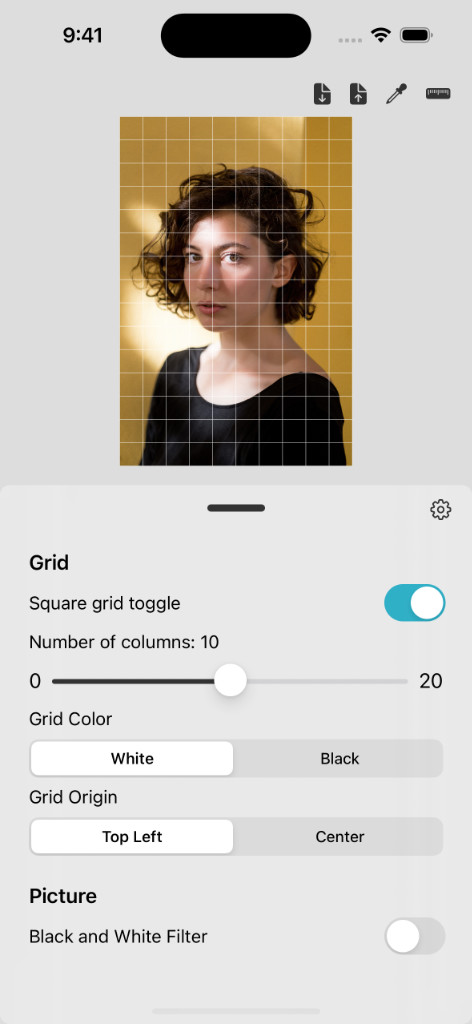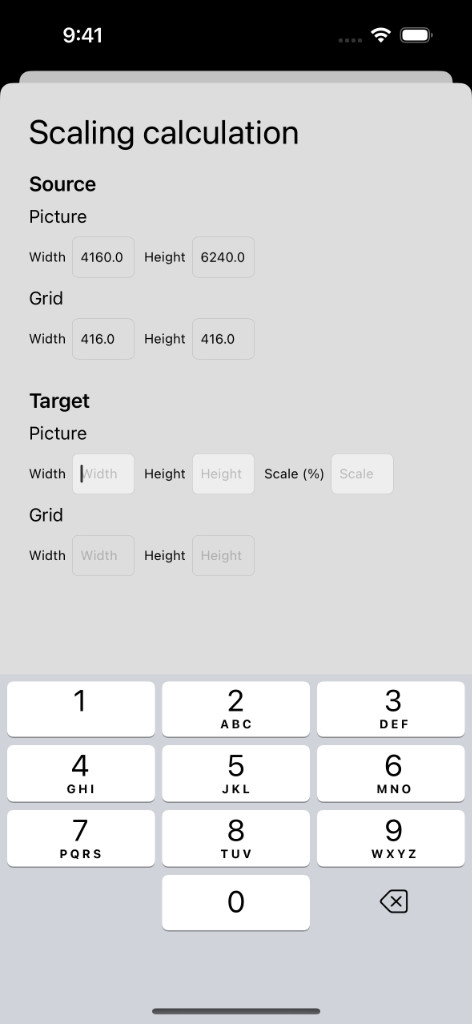Step 2: Setting Up the grid
Decide on the size of your drawing and how many squares you want to divide it into.
The number of squares will depend on the complexity of your subject and your desired level of detail.
Start with a smaller grid (e.g., 4x4 or 6x6) for simpler subjects, and increase the grid size for more intricate subjects.
The grid settings are available in the bottom sheet. You can either drag it, or tap on the cog icon to open it.
You can select the number or squares, the grid color, and the grid origin. If you are using Procreate©, its grid origin is at the center by default.

